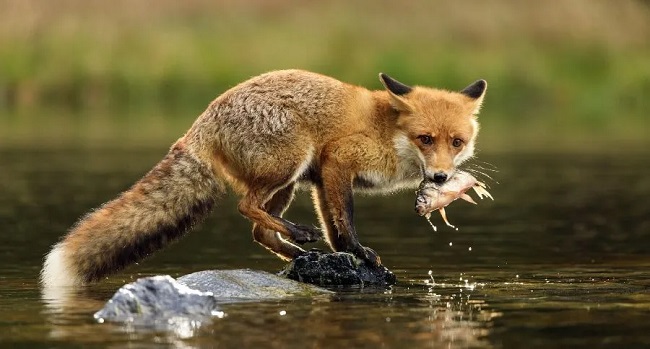Foxes, known for their cunning nature and striking appearance, are some of the most adaptable creatures on our planet.
With their diet, they exhibit remarkable flexibility, feasting on a wide variety of food based on their habitat and the season. So, what exactly do foxes eat? Let’s explore.

Foxes as Omnivores
Primarily, foxes are omnivores, which means they consume a mix of meat and plant-based foods. Their typical diet includes small mammals, birds, reptiles, bugs, fruits, and vegetables. However, their menu is largely determined by the food availability in their specific habitat.
Read Also:
The Predatory Side of Foxes
Foxes are exceptional hunters. They primarily feed on small mammals, including rabbits, rodents, squirrels, and even insects.
Some foxes, like the Arctic fox, will also feed on the eggs of ground-nesting birds. Foxes use their acute sense of hearing to locate their prey even under the snow or in dense vegetation.
Foxes and Scavenging
Being highly adaptable, foxes are also proficient scavengers. Particularly in urban environments, foxes are known to rummage through garbage bins to find food, including leftovers, fruits, vegetables, and even pet food left outdoors. This scavenging habit helps them survive in environments altered by human activity.
Plant-Based Diet of Foxes
While foxes are competent predators, they also consume a considerable amount of plant-based food. Berries, fruits, grasses, and other types of vegetation often form a substantial part of their diet, especially when other food sources are scarce.
Seasonal Variation in a Fox’s Diet
A fox’s diet changes with the season. In spring and summer, when fruits and insects are abundant, these make up a substantial part of their diet. However, in winter, foxes rely more heavily on small mammals, which are active throughout the year.
Dietary Differences Among Fox Species
Foxes are a diverse group with about 37 species, and while they all exhibit a certain degree of dietary flexibility, some differences exist based on species and habitat.
For instance, the diet of the desert-dwelling Fennec Fox includes more insects and plants due to the scarcity of small mammals.
On the other hand, the Arctic Fox, native to cold Arctic regions, relies heavily on marine life, such as fish and small marine mammals.
Foxes’ Role in Pest Control
With a diet comprising largely of rodents and insects, foxes play an integral role in controlling pest populations. By hunting rodents and insects, foxes can help keep these populations in check, indirectly aiding human agricultural activities.
Nutritional Needs of Foxes
Like other mammals, foxes require a balanced diet to maintain their health. Their dietary intake consists of proteins, fats, carbohydrates, and fiber, all consumed in varying proportions depending on their source of food.
Proteins and fats primarily come from their animal prey, while carbohydrates and fibers are derived from plant-based foods.
The Impact of Human Activity on Foxes’ Diet
As humans increasingly encroach upon natural habitats, foxes’ diets have adapted. In urban and suburban areas, foxes have become notorious for scavenging in garbage bins and even eating pet food left outdoors.
While they showcase the foxes’ adaptability, these changes highlight the challenges that human activity can impose on wildlife.
Read Also:
Conclusion
Foxes are true survivors, thanks to their flexible diet. From hunting small prey to scavenging in urban environments and feasting on fruits and vegetation, they’ve adapted to make the most of the resources available to them.
This adaptability not only speaks to their survival prowess but also to their significant role in maintaining the balance of various ecosystems.
























